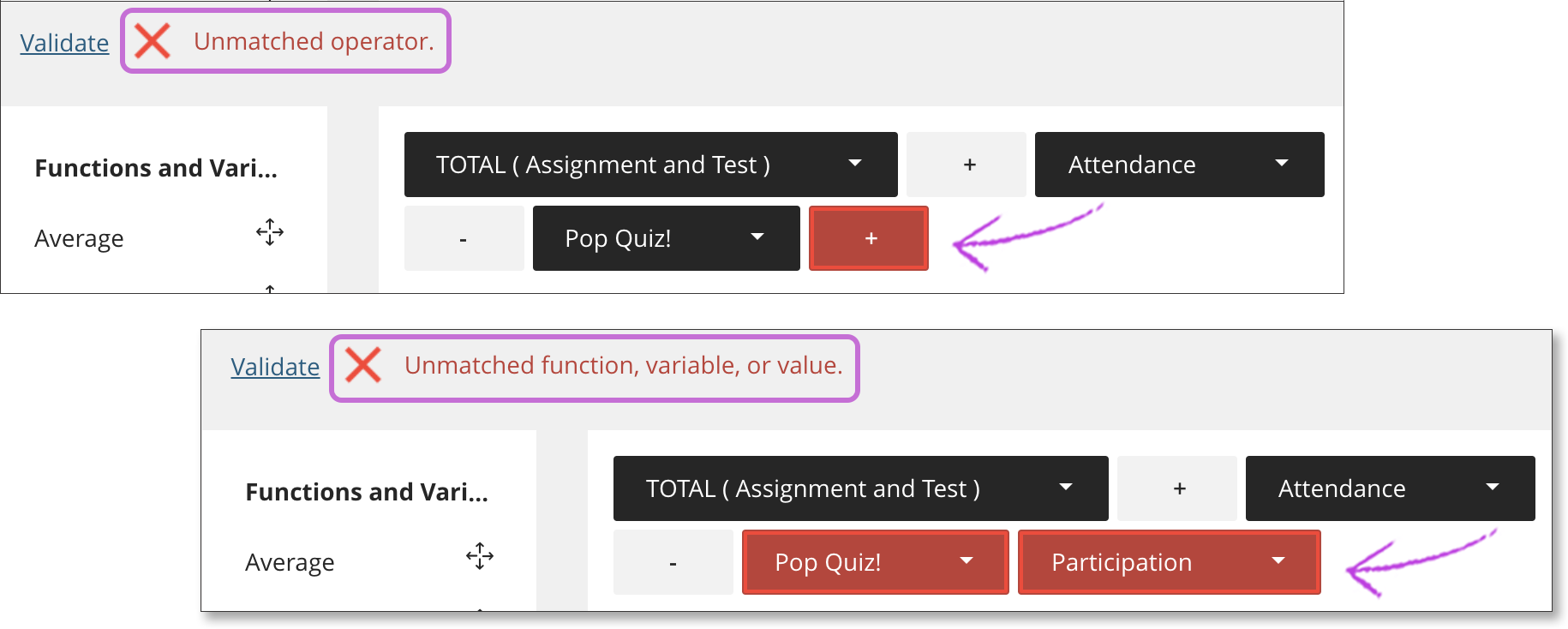When to Use?
With the "Drop Grades" feature, multiple grades can be dropped from the student's Overall Grade within the course. There is an option to drop the lowest or the highest grade. Follow the instructions below, or watch the video, to learn how to drop the lowest or highest grade in the Gradebook.
The Lowest Scores can only be dropped from a category within the Overall Grade. In other words, the assignment must be associated with a category (e.g. assignment, homework, test, etc) and the category can be configured to drop the lowest score from the items housed within that category. In the image below, "Test" would be the category and the lowest score of (1) of the Applied Activity assessments is configured to be dropped. It is important to ensure only the activities you wish to be eligible for dropping be housed within the category.

Special Items to Note When Dropping the Lowest Score:
- When the course has recently started and/or there is little grading yet completed in the course, when students have completed an activity in a category configured to drop a low score, the first score earned in this category will be dropped until additional scores are earned in this category.
- Students' view of the Gradebook does not indicate to them which score is the one that was dropped.
Procedure
There are (2) ways to drop the lowest score:
- From the Gradebook List or Grid View
- Through a calculation created in the Gradebook.
Gradebook List or Grid View Option
1. Access the Gradebook and in either List or Grid View click on the Settings gear icon

2. Scroll down to the Overall Grade area and click on Manage Overall Grade Settings

3. Select the Weighted Calculation Type

4. Select the category that you want to drop the low scores in and click on Edit Calculation Rules

5. Enable the Category Calculation Rule, click on the Drop Scores button and enter the number of scores you wish to drop

6. Click on Continue to save your changes

Gradebook Calculation Option
- Access your Ultra course and select the Gradebook from the top-right menu.
- Hover over your Gradebook (either List or Grid view) until the purple plus appears.
- Click the purple plus, then select Add Calculation

4. A new screen will open with a formula builder. Enter a name for this calculation at the top of the page.
5. Select a Grading Schema: Letter, Percentage, or Points.
NOTE: Base calculation on points earned out of total graded points, known as Running Total, is on by default. It is recommended this be left as is. See: Importance of Automatic Zero's and Running Total: What's the Impact to my Gradebook?

6. Click TOTAL from the Functions and Variables column. This moves Total to a column on the right.

7. Select the TOTAL in the formula builder canvas and choose the category from which you will drop the lowest score.

8. From the Operators and Functions columns, click the following in this specific order:
A. Subtract
B. Open Parenthesis
C. Minimum (found in the Functions and Variables column)- be sure to choose the same category as TOTAL
D. Multiply
E. Value - enter 1
F. Closed Parenthesis

9, Click Validate to verify the formula. A green checkmark means your formula is good.
10. Click SAVE to return to the Gradebook and check the results.
Your newly created calculated item appears in your Gradebook. In List View, press the Move icon in the row of the calculation to drag it to a new location and release. The order you choose also appears in the Grid View and on students' Grades pages.

Reminder: Students won't see the calculation until it has a grade and you make the item visible to them.
Functions & Variables Column
- Average: Generates the average for a selected number of graded items, categories, and other calculations. For example, you can find the average score on all tests.
- Total: Generates a total based on the cumulative points, related to the points allowed. You can select which graded items, categories, and other calculations are included in the calculation.
- Minimum: Generates the minimum grade for a selection of graded items, categories, and other calculations. For example, you can find the minimum score on all assignments.
- Maximum: Generates the maximum grade for a selection of graded items, categories, and other calculations. For example, you can find the maximum score on all discussions.
- Variable: Select an individual graded item or calculation from the menu. You may only add one variable at a time. Continue to add variables from the left pane to add as many variables as you need.
Operators Column
- Add ( + )
- Subtract ( - )
- Divide ( / )
- Multiply ( * )
- Open Parenthesis (
- Close Parenthesis )
- Value: After the text box appears in the formula, click in the box to add a numeric value. You can include seven digits before a decimal point and four digits after it. When the calculation is generated and appears in students' grade pills, only two digits appear after the decimal point.
If the formula isn't valid, an inline error message appears next to Validate. Problems in your formula are highlighted in red in the right pane.
Example error messages:
- Unmatched operator: Symbols such as (+) or ( -) don't match up with another part of the formula. Example: Graded item + (nothing).
- Unmatched function, variable, or value: Typically appears when an operator is missing between two variables, such as two graded items or categories.
- Some error messages are specific, such as Unmatched opening parenthesis, to alert you to exactly what's missing.

See Also: